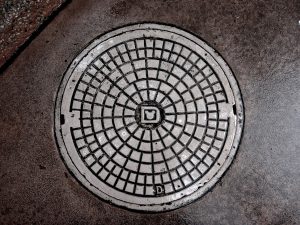Home Improvement
The Future of Sewer Repair: Benefits and Methods of Trenchless Technology
Key Takeaways
- Trenchless technology offers non-invasive sewer repair methods that are cost-effective and environmentally friendly.
- Popular techniques in trenchless technology include pipe bursting and cured-in-place pipe (CIPP) lining.
- This technology reduces disruption to daily life and landscapes, making it a preferred choice for urban areas.
- Advancements in this field continue to improve efficiency and effectiveness.
Introduction to Trenchless Technology
Upgrading or repairing sewer systems doesn’t always have to mean torn-up lawns and disrupted streets. Trenchless technology presents a modern solution to these age-old problems. This sewer repair method is gaining traction due to its minimal disruption and superior cost efficiency. Imagine dealing with a sewer problem that requires no large-scale digging and minimal disturbance to your daily routines—it sounds like a dream come true! If you’re facing sewer line issues and want an effective, non-invasive solution, call us for help today.
What Is Trenchless Sewer Repair?
Trenchless sewer repair refers to various methods of fixing sewer lines without extensive digging. Traditional sewer repair methods often involve excavating large sections of ground, which can be both time-consuming and disruptive to the surroundings. In contrast, trenchless technology uses advanced techniques to access and repair pipes through small, strategically placed entry points. This innovation has revolutionized the way we approach sewer repairs, making the process significantly less invasive and more efficient.
Popular Methods of Trenchless Sewer Repair
- Pipe Bursting: This method involves breaking the existing pipe apart while simultaneously pulling a new pipe through the same path. It’s particularly useful for replacing old and damaged pipes. The new pipe is often made of high-density polyethylene (HDPE), which is highly durable and corrosion-resistant. This method not only replaces the damaged pipe but also increases the lifespan of the sewer system.
- Cured-In-Place Pipe (CIPP) Lining: This technique uses a flexible liner that is saturated with resin. After being put into the broken pipe, the liner is inflated. It builds a new pipe inside the old one after it hardens. This technique is extremely flexible and can be applied to a variety of pipe lengths and diameters for repairs. The result is a “pipe within a pipe,” which is both durable and leak-proof.
Benefits of Trenchless Technology
The fact that trenchless sewer repair causes the least amount of disturbance to daily life is one of its main benefits. Traditional methods often require large-scale excavations, which can be both time-consuming and costly. Projects that involve digging up roads, sidewalks, and lawns can take weeks to complete and leave a significant mess behind. In contrast, trenchless methods are faster and less invasive, usually completed in just a few days. For instance, a National Geographic article highlights the environmental benefits of limiting urban disruption. These benefits include preserving green spaces and reducing noise pollution, making trenchless technology a win-win for both residents and the environment.
Cost-Effectiveness
Trenchless technology often proves to be more cost-effective in the long run. Despite the initial investment being slightly higher, the reduction in restoration costs and shorter project timelines make it an economically viable option. The reduced need for extensive excavation means less money spent on labor and materials for restoring landscapes, roads, and sidewalks. Additionally, the longer lifespan of the repaired pipes means fewer repairs in the future, further reducing costs. A recent study from the EPA provides insights into the financial benefits of adopting sustainable methods for infrastructure repairs. The study emphasizes that investing in advanced repair technologies like trenchless methods can lead to substantial savings over time.
Environmental Impact
Reducing the need for extensive digging preserves natural landscapes and minimizes carbon emissions associated with heavy machinery. Traditional sewer repair methods require the use of large, diesel-powered equipment that emits significant amounts of greenhouse gases. In contrast, trenchless technology uses smaller, more efficient equipment, resulting in lower emissions. This makes trenchless technology an environmentally friendly option for municipalities and homeowners alike. By choosing trenchless methods, you are contributing to a reduction in your carbon footprint, which is essential for combating climate change.
Future Prospects in Trenchless Technology
As urban areas continue to expand, the demand for efficient and non-invasive infrastructure repair methods is on the rise. Technological advancements are making trenchless methods even more reliable and accessible. Innovations such as robotic equipment for more precise pipe repairs and improved epoxy resins for longer-lasting pipe linings are just a few examples of how the field is evolving. The integration of robotics and improved materials is poised to further revolutionize this field, making trenchless sewer repair an even more attractive option.
Conclusion
In summary, trenchless sewer repair offers a modern, efficient, and environmentally friendly alternative to traditional methods. Its benefits range from reduced disruption and cost savings to positive environmental impacts. The efficacy and dependability of these techniques are anticipated to increase with the advancement of technology, rendering them a progressively appealing choice for global populations. Whether you’re a homeowner dealing with a sewer issue or a municipal planner looking to upgrade city infrastructure, trenchless technology provides a forward-thinking solution that meets the needs of today’s world.





